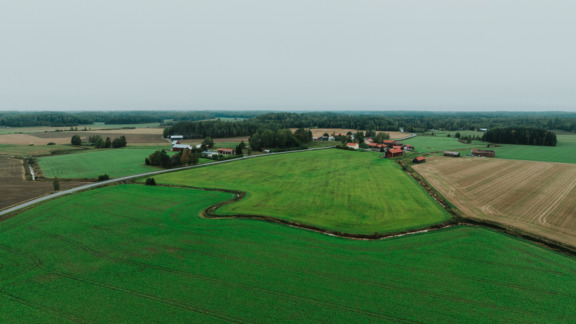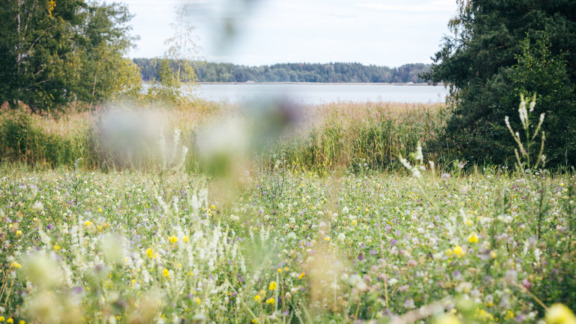Dairy farms to carbon farms – training Valio’s producers to become carbon farmers
The Finnish dairy company Valio aims to achieve a carbon neutral dairy chain by the year 2035. To reach the ambitious goal, extensive collaboration with dairy producers is needed. In the fall of 2019 Valio and Baltic Sea Action Group organized two trainings for Valio’s producers with the heading ”Dairy farms to carbon farms”. The trainings were held in Aulanko on the 29th and 30th of October, and in Tahko on the 6th and 7th of November. Nearly 200 dairy producers participated in the trainings.
Valio’s director of the carbon neutral dairy chain Juha Nousiainen noted how cattle has been prominently featured in discussions about climate change, and usually in a negative light. The dairy chain wants to prove that they are aware of their production’s effect on climate, and that Valio wants to make a positive impact. Valio’s carbon neutral dairy chain takes into consideration e.g. emission-reducing technologies, energy production, logistics, packaging and losses in addition to developing the dairy farms. The perennial grasses used in dairy farming are also a good way to cover organic peatlands and prevent them from releasing carbon.
The trainings approached the subject from a futuristic point of view. BSAG’s head of training Sanna Söderlund prompted the audience to ponder the change and possibilities ahead. Dairy farms have a great potential in carbon sequestration and the future is yet to be written. We have a unique opportunity to develop production towards one that benefits the environment and sequesters carbon. This calls for openness and courage to take on new challenges and develop the existing solutions further.
The trainings began with presentations on the basics of carbon farming by Carbon Action’s experts Eliisa Malin (Aulanko) and Juuso Joona (Tahko), as well as speeches from the dairy producers themselves who spoke about their motivation to become carbon farmers. The producers got to share their thoughts further in small groups, and the discussion was lively. The future of agricultural aid, possible marketplaces for sequestered carbon, alternatives to tilling and how to reduce the use of plant protection products were among the subjects discussed in the groups. Researchers from the Carbon Action platform also gave presentations on the measuring and verification of carbon sequestration.
As the participants were all dairy farmers, it wasn’t surprising that discussion on grass took the centre stage in the trainings. Numerous specialists shared their expertise in so called grass modules. Grass is the most important feed in a dairy farm and the productivity of the farm often depends on it. In addition to pastures, perennial and multi-species grasses are the cornerstone of carbon farming.

The next day began with a panel discussion on the philosophy behind carbon farming, led by Sanna Söderlund. Agriculture plays a huge part in climate change, and plants are the most crucial part of the solution. Attitudes towards agriculture have started to change in the last couple of years, as fields are seen as a solution instead of a problem. This has made a more open discussion possible, and the younger generations have a lot of potential and understanding. Doing climate smart work in the fields also increases the productivity of both dairy production and all farming. However, reaching the goal will take time and effort.
Agronomist Jussi Knaapi addressed the importance of verifying the amount of carbon stored in the soil. At the moment there isn’t much data from the deeper layers of soil and more resources should be directed towards this work. Currently soil samples from deeper layers, as well as verification methods are researched in the Carbon Action platform and the stn MULTA project. Knaapi states that measurements and scannings from the fields are, together with other research, an important tool if we want to trade with carbon in the future. He also highlighted the need for holistic management in the farms.
Experts and researchers also gave presentations on protein rich fodder crops, as well as mitigating the carbon emissions from peatlands. The next training will be in the form of a webinar focusing on creating a carbon farming plan for each individual farm.



